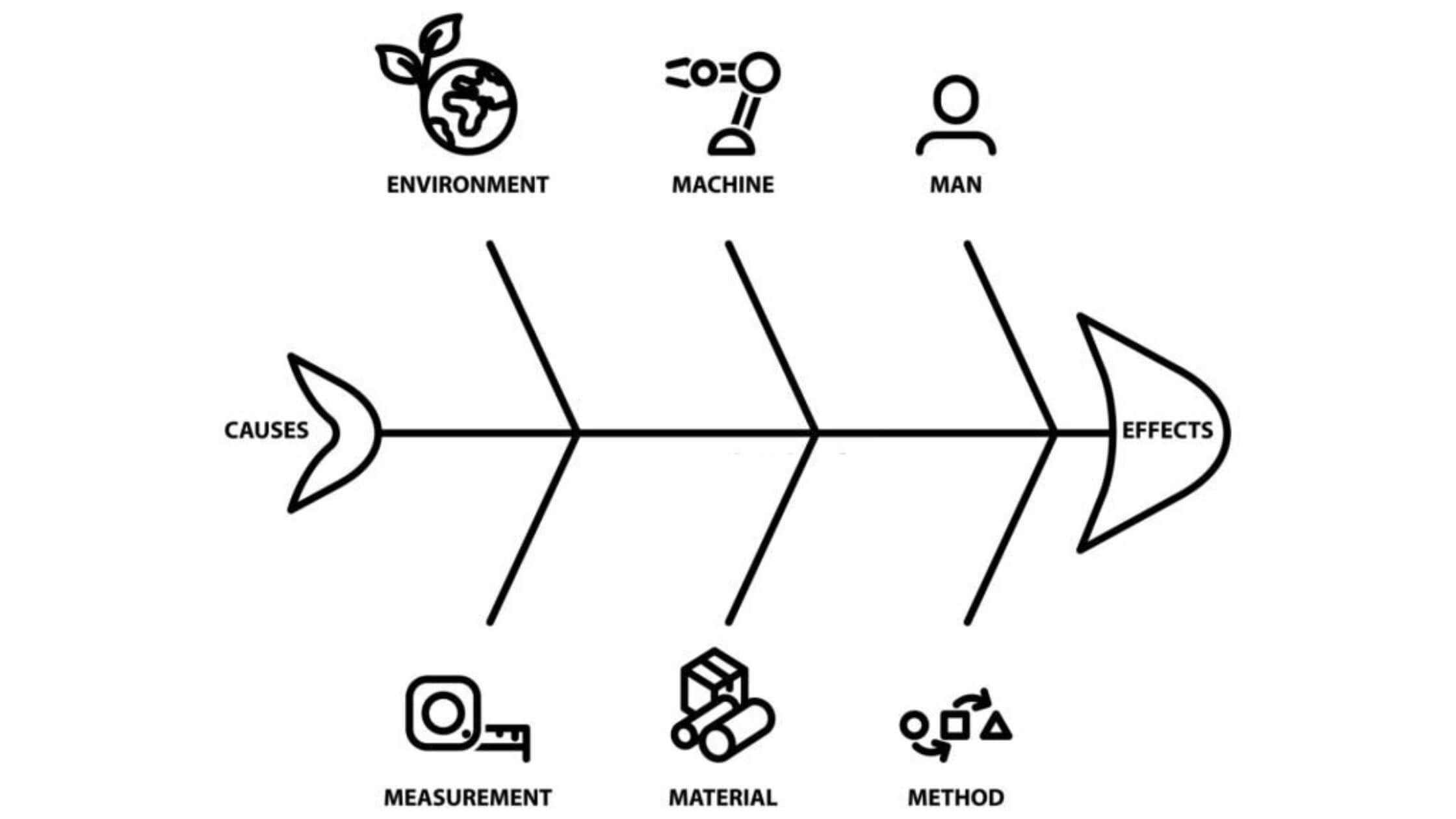

A fishbone diagram, also known as a cause-and-effect diagram or an Ishikawa diagram, is a visual tool used for problem-solving and root cause analysis. It helps identify the potential causes of a problem or an effect by visually organizing contributing factors into different categories. Constructing a fishbone diagram can provide valuable insights and facilitate the decision-making process. In this article, we will guide you through 9 steps for constructing a fishbone diagram, enabling you to effectively analyze and solve complex problems.
Step 1: Define the Problem
Start by clearly defining the problem or the effect you want to analyze. Clearly stating the problem helps focus your efforts and ensures that the fishbone diagram addresses the core issue.
Step 2: Identify Major Categories
Determine the major categories or main branches of your fishbone diagram. Common categories include people, process, equipment, materials, environment, and management. Choose categories that are relevant to your problem or effect.
Step 3: Draw the Backbone
Draw a horizontal line across the page or whiteboard to represent the backbone of the fishbone diagram. This line represents the problem or effect you defined in step 1. Extend diagonal lines, resembling the shape of fishbones, from the backbone.
Step 4: Add Major Categories
Label each diagonal line with the major categories you identified in step 2. Space them evenly along the backbone. These categories will serve as the main branches of your fishbone diagram.
Step 5: Brainstorm Potential Causes
Brainstorm potential causes within each category. Encourage a collaborative approach by involving relevant stakeholders. Write each cause as a branch extending from the corresponding category line.
Step 6: Analyze and Group Causes
Review and analyze the potential causes you brainstormed in step 5. Identify any duplicate or similar causes and group them together. This step helps consolidate and organize the causes for better clarity.
Step 7: Identify Sub-Causes
If necessary, break down the grouped causes into sub-causes. This step provides a more detailed analysis and allows you to identify specific factors contributing to the main causes.
Step 8: Analyze Relationships
Analyze the relationships between causes and sub-causes. Identify any cause-and-effect relationships, dependencies, or interactions. This analysis will help you understand the underlying connections and determine the most influential causes.
Step 9: Refine and Present the Diagram
Refine and finalize the fishbone diagram by organizing the causes and sub-causes in a logical and structured manner. You can use additional lines, colors, or symbols to enhance clarity and readability. Once complete, present the diagram to relevant stakeholders for further analysis and decision-making.
The History of the Fishbone Diagram
The Fishbone Diagram was originally created by Dr. Kaoru Ishikawa as a way of understanding the coloration between quality control systems within projects. When defining variables that cause challenges in projects, these can be labeled as either factors or causes.
Organizing Quality Control
Final deliverables in a project can be referred to as quality characteristics. The Fishbone Diagram is used for better understanding the correlations between cause and effect in problems within a project. Organizing and identifying potential roadblocks into buckets can help when needing to identify challenges down the line. This way, you are better prepared to identify potential problems for your project team and stakeholders. These categories, or buckets as referred to above, can help project managers identify potential roadblocks more easily.
Relationships Between Cause and Effects
In the Fishbone Diagram, the identified issue is placed in a box as the head of the fish. This fish head represents the impact the problem will have on all other project systems. The themes and sub-themes are then positioned to the left of the fish head.
Fishbone diagrams are created at first to identify causes and then categorize these causes into a few different themes. It is a great tool to use if you are leading a large project team with many different functions, in order to keep everyone in the loop. Stakeholders will also be able to grasp a picture of how the project is looking from an external standpoint.
Understanding Categorization
A typical categorization technique is usually referred to as 5Ms and 1P. This can be used as a checklist to identify causes and themes, specifically in manufacturing industries. Next, we will explore this categorization methodology when aiming to create a Fishbone Diagram.
- Machines are potential causes related to equipment on-site. Technological causes are typically related to tools in the software sector.
- Methods are potential causes associated with the policy, approach, and practice of a project.
- Materials are potential causes related to raw materials or information systems.
- Measurements refers to potential causes related to quality and quantity, that can impact the final outcome for a client.
- Environmental factors include both internal and external factors that are related to weather issues, temperature, physical surroundings, management surroundings, or other factors project teams may encounter when on-site.
- People, stakeholders, and investors who are involved with the project, as well as the options of customers and essential business partners.
Conclusion
Constructing a fishbone diagram is a valuable technique for problem-solving and root cause analysis. By following the 9 steps outlined in this article, you can effectively create fishbone diagrams that provide insights into complex problems and facilitate the decision-making process. Embrace the power of visual representation and leverage fishbone diagrams to identify potential causes, analyze relationships, and drive meaningful solutions.
Pass Your PMI Exam & Grow Your Career with Brain Sensei
Looking for the best way to prepare for your PMI certification exam? Brain Sensei offers the most interactive and effective online courses, exam simulators, and PDU renewal bundles—designed to help you pass with confidence and keep your credentials current. Our materials are always up to date, ensuring you get the latest and most effective exam prep at an unbeatable value.
- ✅ 99.6% first-time pass rate
- ✅ Longest access periods in the industry
- ✅ 100% pass guarantee—because we stand behind our material
- ✅ Engaging, interactive courses that make learning stick
- ✅ Realistic exam simulators to test your knowledge before the big day
- ✅ PDU renewal bundles to maintain your certification with ease
Join thousands of project managers who trust Brain Sensei to help them get certified and stay ahead in their careers.
Sign-up for a 7-day free trial! Try the first two modules of Brain Sensei’s story-based PMP and CAPM Exam Prep courses and a mini practice exam and see how it all works
Have you led projects and are looking to earn a project management certification? You might be interested in learning about how lucrative this can be. Check out these articles.
13 PMP Benefits Once You Get The PMP Certification
No experience leading projects but still want to get into project management? No problem! Check out these articles.
CAPM Certification Eligibility
What is a Certified Project Manager; How do I get PM Certifications


